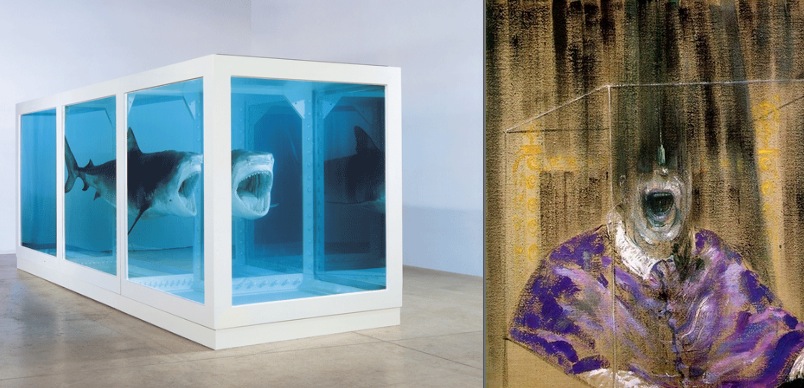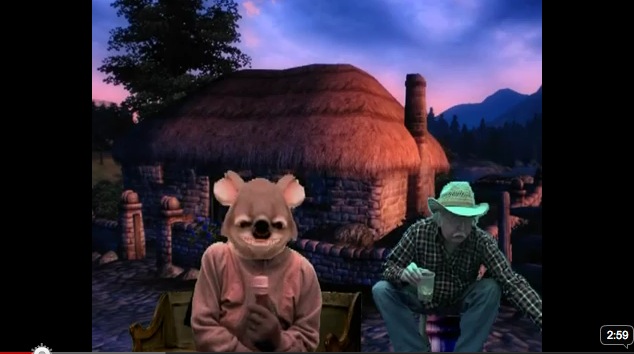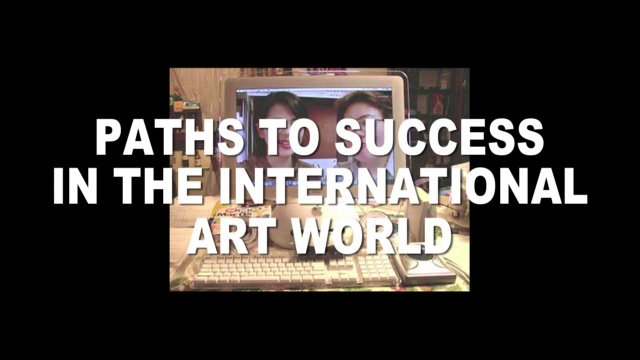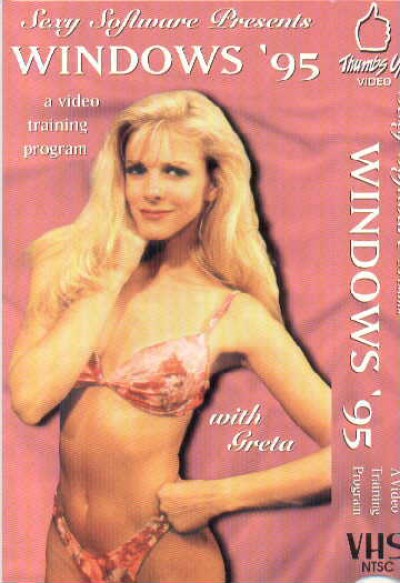Nicolas Cage performs John Cage’s 4’33”. By Adam Lucas.
(via dangerous minds)
There are hundreds of videos and reports of this show online. But this one is the best so far.
Also, Noel Fielding is great (he will always be Richmond to me).

I was well aware of Hirst’s love for Francis Bacon, but suddenly, today, it all became much clearer..
I’d say yes.
“The purpose of technolgy is not to confuse the brain but to serve the body“. William S. Burroughs starring in a shoe advert for Nike in 1994. WTF.
[via dangerous minds]
“The internet has intensified connections between people across the planet. In this episode we take a look at the impact of this new interconnectivity on the art world. Traditional funding models are dissolving, new forms of expressing ownership have arisen to accomodate for remix culture, and artists are finding ways to connect physical art experiences and traditions to the internet. In the digital era, the experience of art from the perspective of the artist and the art audience is shifting rapidly, and bringing more people into the creative process. “
One of my favourite net art works of all time. Ladies and Gentlemen, etoy‘s Digital Hijack (Ars Electronica version)…
How Art Works? A serious movie about problems and solutions, by Paweł Sysiak and Tymek Borowski.
This video is important. Direct, sincere, funny and, well, let’s say FREE. It’s time to change perspective, radically and immediately. Take back art now.
“♫ let’s make art as if art wouldn’t exist ♫”

Interesting photo and video works by Assaf Shaham.
“Star Wars Uncut, the collaborative fan remake of Star Wars, has been assembled into the definitive director’s cut by project creator Casey Pugh.
The project began in 2009, when Pugh divided Star Wars into 472 15 second segments and asked the Internet to remake the film segment by segment.”
(via Laughing Squid)
This lecture by Alain de Botton is inspiring, entertaining and even mindblowing. Have you ever thought that sometimes embracing sadness and pessimism could help you achieve better things in life? It may seem a little odd but it does make sense. If you have half an hour to spend, I suggest you listen to this.
“In this secular sermon, Alain challenges the great bourgeois promise that everyone can find happiness in love and work and suggests that we take on the joys of pessimism instead. He argues that the chances of anyone succeeding in both areas (let alone in one) are extremely remote – and that it is therefore peculiar, and deeply cruel, to base our societies around these values. Indeed, in denying a place for misery and despair, the modern world denies us the possibility of collective consolation, condemning us instead to solitary feelings of shame and persecution. ”
“Suddenly, one day some little fat girl in Ohio is gonna be the new Mozart…and make a beautiful film with her father’s little camera-corder, and for once this whole professionalism about movies will be destroyed, forever, and it will really become an art form.” – Francis Ford Coppola
The excerpt comes from Hearts of Darkness, the documentary about Coppola’s 1979 cult-classic Apocalypse Now.
(via Brain Pickings)

Remember Wendy’s crazy 3d videos? I just found another unknown, underrated genius. Say hi to Zonaromega, from Russia…
[via dangerous minds]
Timothy Tiah’s proposal to his girlfriend Audrey. It’s all about memes. And it’s sweet….
(via The Daily What)
This is possibly the best speech I heard about creativity and authenticity in years. Try to watch it entirely, it’s worth it:
Quoting from Open Culture‘s website:
“In early October of 2009, Malcolm McLaren was nearing death but didn’t know it yet. He showed up at the 2009 Handheld Learning conference feeling fatigued, but managed to deliver a provocative and heartfelt speech titled, ‘Never Mind the Bullocks, Here’s the Txt Pistols,’ in which he reflects on his life growing up in post-World War II England and expresses dismay over the rise of what he called ‘karaoke culture.’
‘All popular culture today,’ said McLaren, ‘goes to great lengths to promote the idea that it’s cool to be stupid.’ He championed instead the ‘messy process of creativity’ in which struggle, failure and the acquisition of skill and knowledge are valued above instant fame. You can watch the complete speech above. A few days after it was given, McLaren went into the hospital and learned that he had cancer. He died six months later, on April 8, 2010.”
[via Open Culture]
A couple of years ago, British Pathé uncovered some striking footage from 1922 showing two women experimenting with the first mobile phone.
(via Open Culture)

How To is an ongoing series of instructional videos by Jaakko Pallasvuo about ‘paths to success in the international art world’…
(via today and tomorrow)

‘Bundled, Buried & Behind Closed Doors’ by Ben Mendelsohn is a short documentary on the material infrastructure of the Internet:
“Lower Manhattan’s 60 Hudson Street is one of the world’s most concentrated hubs of Internet connectivity. Set in the dense, mixed-use neighborhood of Tribeca, the building’s nondescript brick exterior conceals several network interconnection facilities where huge amounts of data are exchanged. This short documentary peeks inside, offering a glimpse of the massive material infrastructure that makes the Internet possible.”
(Via Laughing Squid)

Windows ‘95 with Greta is the kind of stuff that makes me love the Internet. How else were we supposed to find this crazy stuff? Seriously, I’m grateful…
[via Dangerous Minds]
Find a valueless video on Youtube and submit it for the NoTube Contest!
1. No reason to make it
2. No reason to publish it
3. No reason to watch it